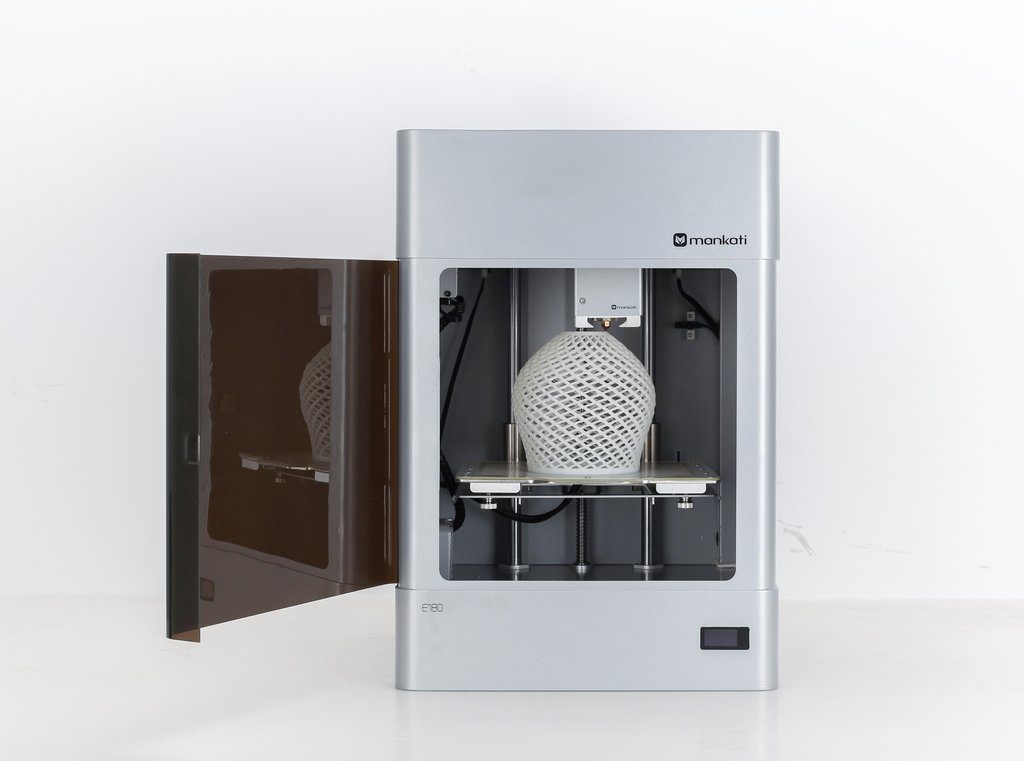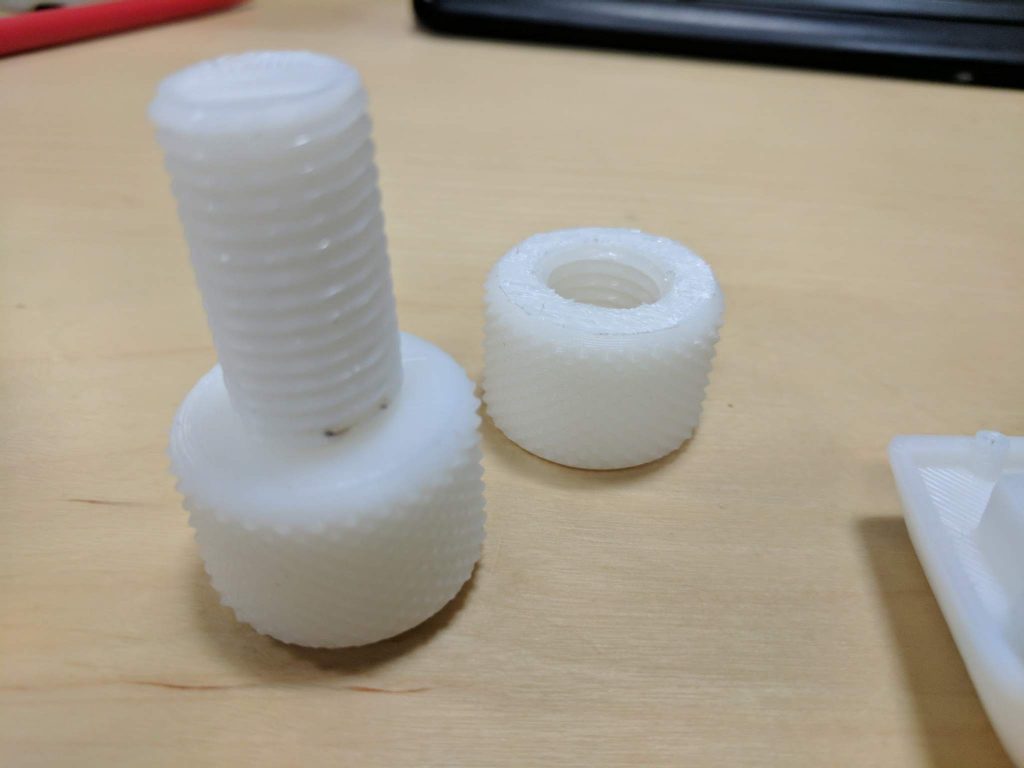The E180 is made by 3D printer manufacturers Mankati who are based in Shanghai, China. The 3D printer is designed to be easy to use and produce professional quality 3D prints. The printer uses what Mankati call Melted Plastic Modeling (MPM), Mankati’s version of the typical fused filament fabrication (FFF) method of 3D printing.
3D Printing Industry received an E180 3D printer from Mankati for review, and this is our report.

Initial impressions
Initial impressions of the 3D printer are that it is well constructed and aesthetically pleasing. The E180 is well built with a fully enclosed metal frame, linear rails for X & Y axis and large lead screws for Z axis, in the main it is very robustly put together.
Notably, the linear rail was of a high quality and bigger than many similar class printers.
After removing the boxes of ABS and Polycarbonate that came with the unit and repairing a power connection that had come loose in transit, the small but perfectly functional OLED sprang into life. The E180 3D printer features auto-calibration of the print bed, however in our experience it was necessary to manually adjust the screw height for the Z home sensor to level the bed.
The E180 comes with mWare slicing software. This is likely to be familiar to users of several other popular slicers. Our review version of the software offered common settings, without an overly crowed range of options. This simple and uncluttered interface makes the software more suited to a beginner and makes obtaining quality prints straightforward.
Users who require greater control over the settings would need to use a tool such as Simplify3D.
3D printing with the Mankati E180
As the photos below show, overall the 3D prints produced were of good quality. When testing the E180 and mWare slicing softwares raft settings removal of the 3D printer was not as straightforward. However, this was for the default settings and with refinements better results could be achieved.



Wireless control and management
The E180 utilizes mRemote software that allows wireless control. mRemote also has built in cluster management, so multiple E180 3D printers can be operated a monitored all at the same time. The software is linked to an on-board camera in the E180 too, so users can keep an eye on the real-time progress of their 3D prints.
This setup is ideal for the likes of 3D printing bureaus and service providers, as it enhances multitasking.
In addition to mRemote software, the E180 comes packaged with Mankati mWare that allows quick start setup and slicing of 3D prints.
Use of the Mankati mWare package. Clip via Mankati 3D Printer on YouTube
Operation and extrusion
For durability the E180 operates on industrial-grade ballscrew and linear rails. The mExtruder also has a drive length of only 50mm, enhancing the flow of materials.
3D printing on the E180. Clip via Mankati 3D Printer on YouTube
Max temperature of the mExtruder is 350 ℃. The compact device is also fitted with a filament detection system that automatically pauses the 3D printer when it is out of material.
Industrial and prototyping material selection
The mMaterials range from Makanti is suitable for prototyping and industrial applications. There are commonly used plastics such as mPLA and mABS. In addition, mMaterials cover high-performance filaments such as mPLAS-CFch, strengthened PLA with carbon fibers, Polycarbonate, flexible rubber mTPU and UV-resistant mASA.
The Elite Series Mankati E180 retails on the company’s online store for US$1999, this includes a starter kit containing a spool of mMaterials, mWare, mRemote software and Simplify3D.
To stay up to date with the latest 3D printer releases, sign up to the 3D Printing Industry newsletter, and follow our active social media channels.
Technical Specifications
Technology – Melted Plastic Modeling
Build Volume – 180mm x 180mm x200 mm
General Dimensions – 340 × 345 × 490 mm (without spool holder)
Weight – 15kg
Connectivity – Wi-Fi, Ethernet, U-Disk
Embedded Processor – Dual Core 1.2 GHz ARM Cortex Chip
Supported Files – STL, OBJ, gcode
Printing specifications
Layer height – 0.06-0.26 mm
Positioning Precision (X/Y/Z) – 1.5 Microns 1.5 µm / 1.5 µm / 1 µm
Extruder maximum temperature – 350 ℃
Heated bed maximum temperature – 110 ℃ (removable)
Air Purification – Yes
On-board Camera – Yes
Materials
Available Materials – ABS, PLA, PC, Nylon, TPU, PETG, ASA, HIPS, Carbon Fiber, plus others.
(Open to third-party filaments)
Material Diameter – 1.75mm
Features – auto pause when out of filament
Software
Operative system – Windows 7/8/10
Supported files – STL, OBJ, gcode
File preparation print software -Mankati mWare
Cluster Management software – Mankati mRemote
Featured image shows the Mankati E180 3D printer.


